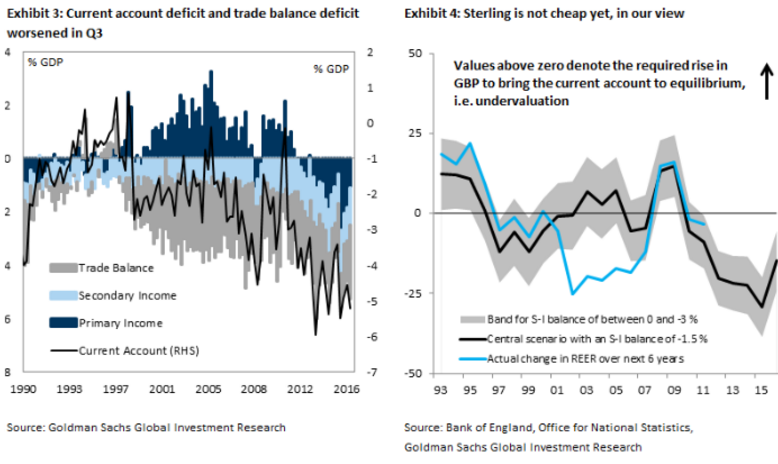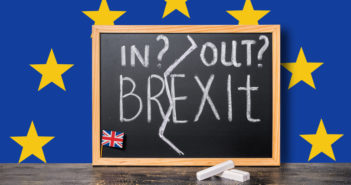The pound has been volatile thanks to May’s Brexit speech. What’s next for sterling? Here is the view from Goldman Sachs:
Here is their view, courtesy of eFXnews:
Prime Minister May’s speech painted a rosy future for the UK outside the European Union and at the center of the global economy, but the near-term implications of the statement look to us entirely different and more harmful than the interpretation embraced by markets.
The speech left no doubt that the UK is prepared to move towards “hard Brexit”: whether the European Union will be willing to negotiate free-tariffs agreements while the UK restrains immigration from EU countries and removes itself from the European Court of Justice’s jurisdiction remains highly unlikely, in our view. The UK’s position on its contribution to the EU budget and the threat of significant tax reductions also have the potential to toughen the EU’s negotiating stance. The European Market, due to its size, is more important for UK trade than the UK is from the European Union and, in our view, PM May’s ‘red lines’ remain incompatible with deals that de facto would grant the UK free access to the Single Market. At best, experience teaches us that it takes an extraordinarily long time for trade agreements to be negotiated and voted by the EU Member States. At worst, the fact that Ms. May stated she would not look for an “unlimited transitional status” and that “no deal is better than a bad deal” puts on the table the possibility that EU-UK trade relationships will be governed by WTO rules in approximately two years’ time. There will also be a high degree of uncertainty over the legal framework governing the trade in services for a long time.
For lots more FX trades from major banks, sign up to eFXplus
By signing up to eFXplus via the link above, you are directly supporting Forex Crunch.

All of this is unlikely to be positive for the UK and its currency in 2017; yet, Sterling recorded the largest positive daily move since 2008. Although positioning, a stronger-than-expected UK inflation print and President-elect Trump’s comments on the value of the USD could also have contributed to the Pound’s appreciation, GBP/USD strengthened during the Prime Minister’s speech, which suggests to us that the market had a more positive take on the government’s plan than we do. This could be either because the market prices that a free-trade deal with the EU could be held with a higher probability than we do, or perhaps because it expects little fallout from Brexit on the economic outlook, a view to which we and our economists do not subscribe. Even though the economy has remained strong, we expect a deceleration in 2017 and more QE from the Bank of England (an additional GBP50bn purchases of Gilts) in the second half of the year.

For all these reasons, we see the squeeze higher in Sterling as a better entry point to take short positions on GBP/USD. Our forecast remains GBP/USD at 1.20, 1.18 and 1.14 in 3, 6 and 12 months, with the risk that this forecast materializes sooner rather than later.
While only time will tell whether the rosy picture painted by the Prime Minister will remain wishful thinking or become a reality that represents a new steady state equilibrium, which would happen some years down the road, our message for 2017 remains hope for the best but the position for Sterling lows.
